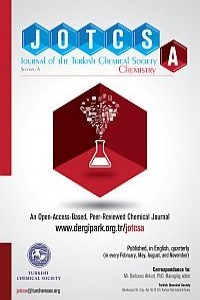Chemical investigation and antioxidant activity of fractions of Lannea humilis (Oliv.) Engl.
Chemical investigation and antioxidant activity of fractions of Lannea humilis (Oliv.) Engl.
The assessment of secondary metabolites shows the availability of steroids, terpenes, glycosides, saponins, tannins, flavonoids, alkaloids, and carbohydrate in the extracts of the stem bark of Lannea humilis. Steroids and terpenes were available in the hexane, ethyl acetate and methanol fraction, while tannins, flavonoids and alkaloids were available in the ethyl acetate and methanol extract. Carbohydrate and saponins were available just in the methanol division. The antioxidant activity of these plant extracts demonstrated a dose-dependent increment. The ethyl acetate extract displayed most noteworthy antioxidant activity of 98% at 240 µg/ml, followed by the hexane extract which had a percentage antioxidant activity of 92 % at 240 µg/ml. The methanol extract demonstrated percentage antioxidant activity of 71 % at 240 µg/ml. These results demonstrated that this plant can be used as a good antioxidant.
Keywords:
: antioxidant activity, DPPH, fractions,
___
- 1. Omar, U.M., Shorbaji, A.M., Arrait, E.M., Al Agha, T.D., Al-Marzouki, H.F., Al Doghaither, H.A. andAl-Ghafari, A.B. (2016) Comparative Study of the Antioxidant Activity of Two Popular Green Tea Beverages Available in theLocal Market of Saudi Arabia. Natural Science, 8, 227-234. http://dx.doi.org/10.4236/ns.2016.86027
- 2. Aurelia Magdalena Pisoschi1 and Gheorghe Petre Negulescu (2011) Methods for Total Antioxidant Activity Determination: A Review Biochem & Anal Biochem, 1:1http://dx.doi.org/10.4172/2161-1009.1000106
- 3. Ll-Bahr, S.M. (2013). Biochemistry of Free Radicals and Oxidative Stress. Science International. 1(5): 111-117.
- 4. Gan, L. and Johnson, J.A. (2013). Oxidative damage and the Nrf2-ARE pathway in neurodegenerative diseases. Biochim. Biophys. Acta. S0925-4439(13)00366-9. doi: 10.1016/j.bbadis.2013.12.011. [Epub ahead of print]
- 5. Aruoma, O.I., Somanah, J., Bourdon, E., Rondeau, P. and Bahorun, T. (2014). Diabetes as a risk factor to cancer: Functional role of fermented papaya preparation as phytonutraceutical adjunct in the treatment of diabetes and cancer. Mutat. Res. S0027-107(14)000736.doi:10.1016/j.mrfmmm.2014.04.007
- 6. Wong, B.X. and Duce, J.A. (2014). The iron regulatory capability of the major protein participants in prevalent neurodegenerative disorders. Front. Pharmacol. 5(81): doi: 10.3389/fphar.2014.00081
- 7. Halliwell, B. (2001). Role of Free radicals in the neurodegenerative diseases, therapeutic implications for antioxidant treatment. Drugs Aging. 18: 685-716.
- Başlangıç: 2014
- Yayıncı: Türkiye Kimya Derneği
Sayıdaki Diğer Makaleler
Yusuf HASSAN, Rosa KLEIN, Yusuf HASSAN
Chemical investigation and antioxidant activity of fractions of Lannea humilis (Oliv.) Engl.
Jonathan ACHIKA, Racheal AYO, Adebayo OYEWALE, Dama JAMES
Sarra SIBOUS, Said BOUKHRIS, Rachida GHAILANE, Nouzha HABBADI, Amina HASSIKOU, Abdelaziz SOUIZI
Soner ÇUBUK, Mirgül KOSİF, Ece KÖK YETİMOĞLU, Memet Vezir KAHRAMAN
Determination of Cd(II) Ions by using Cyclodextrin Based Polymeric Fluorescence Sensor
Soner ÇUBUK, Özge YILMAZ, Ece KÖK YETİMOĞLU, Memet Vezir KAHRAMAN
